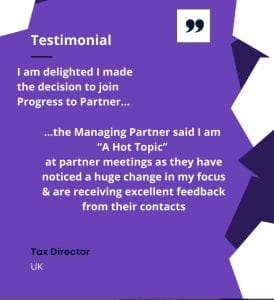A client has emailed you with a request and you know that you’re going to have to turn them down. No one likes to say “no,” so, like many other lawyers, accountants, and consultants, you spend a lot of time dragging your feet trying to let them down gently. Time is very valuable in the professions so to make this process less painful, here is a foolproof how to decline a client politely template!
The typical structure of a refusal email
Regardless of your reason for declining a client request, if you follow this specific structure when you craft your email, you can say “no” to new clients or existing clients quickly and effectively. (Use this structure and our how to decline a client politely template to craft your own refusal email)
1. Start with an appreciation of time and work
 Show your appreciation for their time and their interest in working with you/the firm. You want to start the email positively by acknowledging how much you value their business and then show them that you understand their certain need or issue.
Show your appreciation for their time and their interest in working with you/the firm. You want to start the email positively by acknowledging how much you value their business and then show them that you understand their certain need or issue.
2. Break the news
Deliver the news of rejection as early on and as quick as possible in the email. Be clear and firm in your decision. Don’t leave anything open to interpretation that can raise the client’s hopes.
3. Follow this up with your explanation
When thinking about how to say no to a client email effectively, it is all about explaining why you have to decline. Give them an honest and proper reason that will help them understand the rejection and come to terms with it.
Take a step forward to be in control of your own career progression in your firm. Sign up to my weekly tips here and you’ll find out what you need to be working on in your career development (and how to make the time for your career development) to progress your career in your firm
4. Offer alternative ways to work together
 If you actually want to work with the client, suggest other ways of partnership or discuss how you can maybe work together in the near future. If you want to cut most of your ties with them, try to help them find an alternative to get the job that they need done.
If you actually want to work with the client, suggest other ways of partnership or discuss how you can maybe work together in the near future. If you want to cut most of your ties with them, try to help them find an alternative to get the job that they need done.
5. Close the email
A proper closing should leave a favourable impression on your client. The idea is that, although the client will be disappointed with the refusal, they’ll see you as helpful for finding them another solution and caring for the effort that you made.
How to decline a client politely template
Following the structure of the refusal email, here is a generic example of how to say no to a client email. A “thanks but no thanks” email if you will. For a new client, this is our how to decline a client politely template:
Hi , Thank you so much for taking the time to reach out to me and for your interest in our business. We really appreciate you putting your trust in our services. Unfortunately, at this time, we are not able to fulfil your request for you . Should things change, I will of course be in touch. In the meantime, however, I would like to be available to you for any specific guidance that you may need to find a solution for the work that you are looking for. If you have any other questions, please feel free to reach out to me. I’d be very keen to help. Yours Sincerely ,
Take a step forward to be in control of your own career progression in your firm. Sign up to my weekly tips here and you’ll find out what you need to be working on in your career development (and how to make the time for your career development) to progress your career in your firm
Start saying “no” efficiently and effectively
Now you have our “How to decline a client politely template,” make the process of refusal much less painful by creating your own email templates. The above structure shows you how to say no to a client email so use it to craft the perfect response.
 There’s a great course that you’ll love to work through in my Progress to Partner Academy called “How to give negative feedback to people who matter, without it being a career-limiting move.”
There’s a great course that you’ll love to work through in my Progress to Partner Academy called “How to give negative feedback to people who matter, without it being a career-limiting move.”
It’s a great course that will give you the confidence and tools to give negative, constructive or developmental feedback to clients, partners, team members and people working on your jobs.








